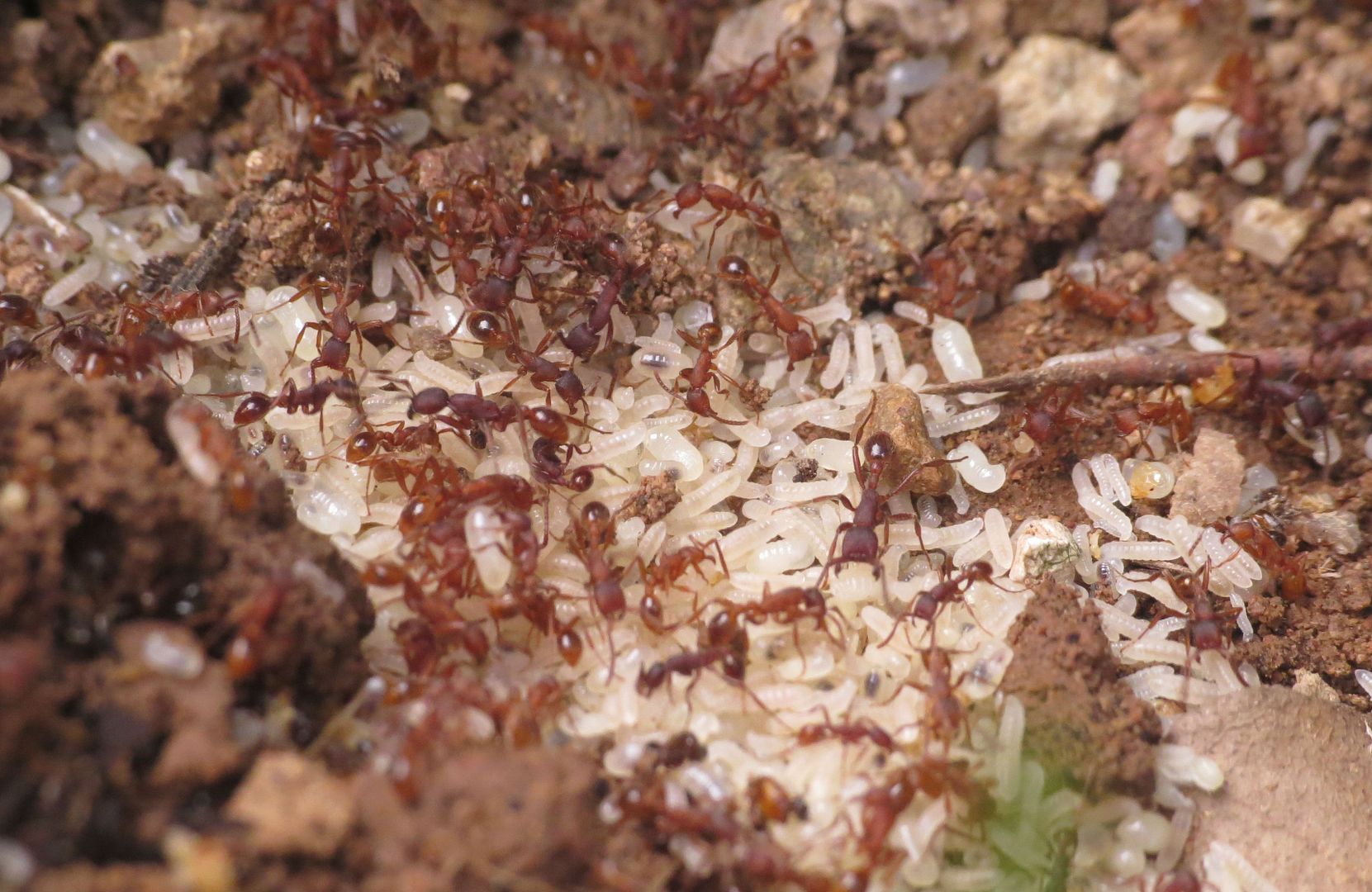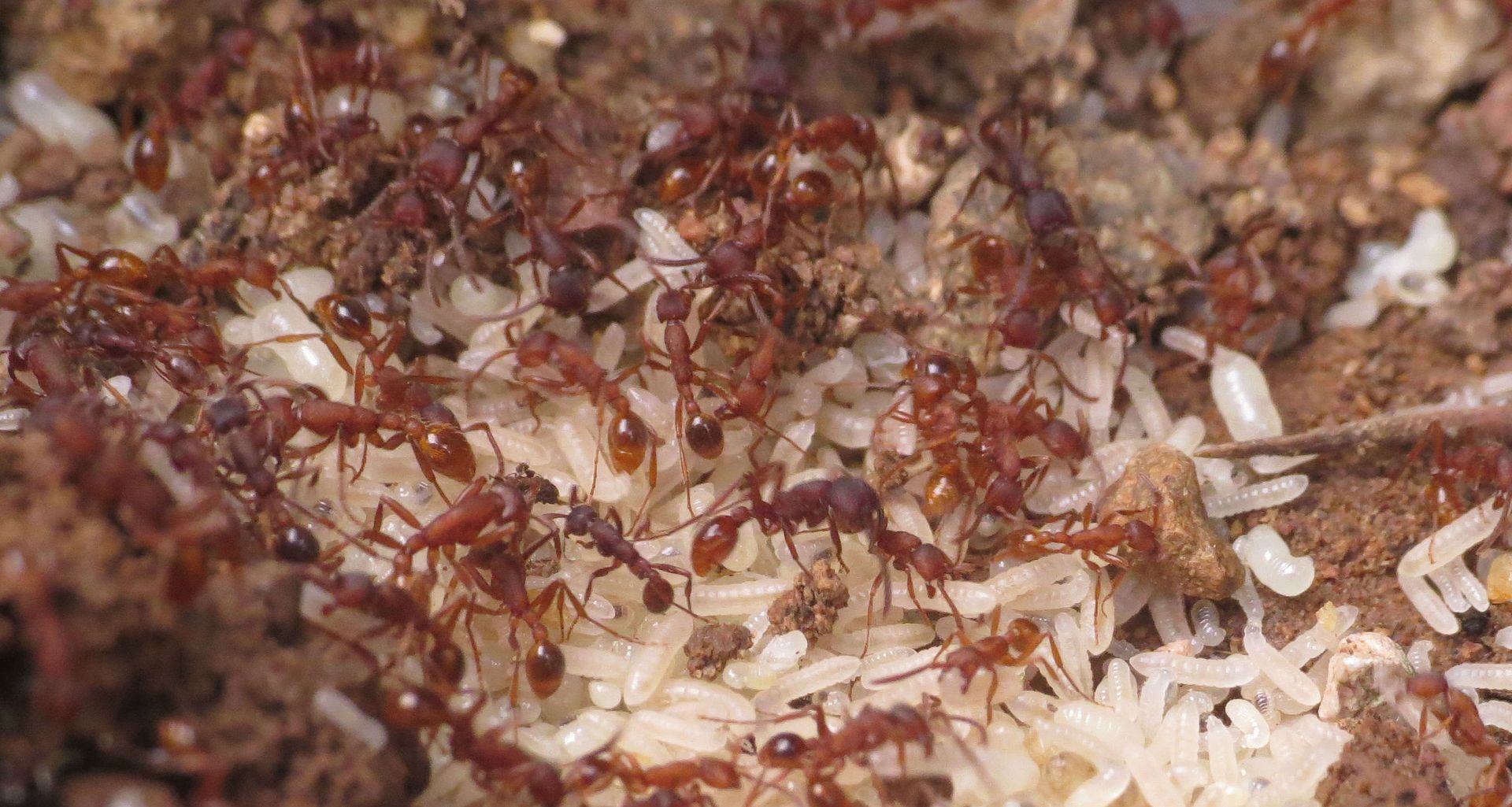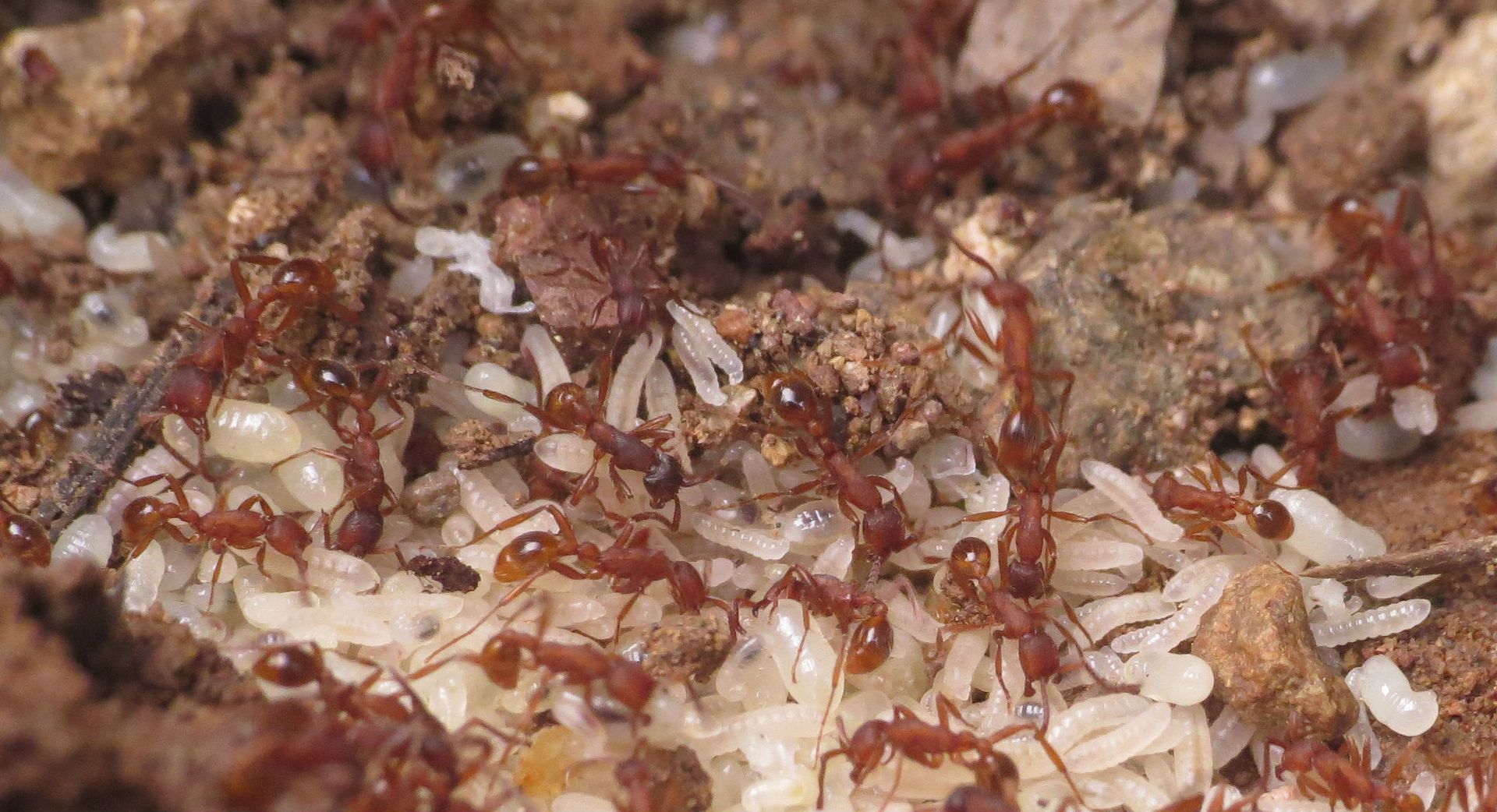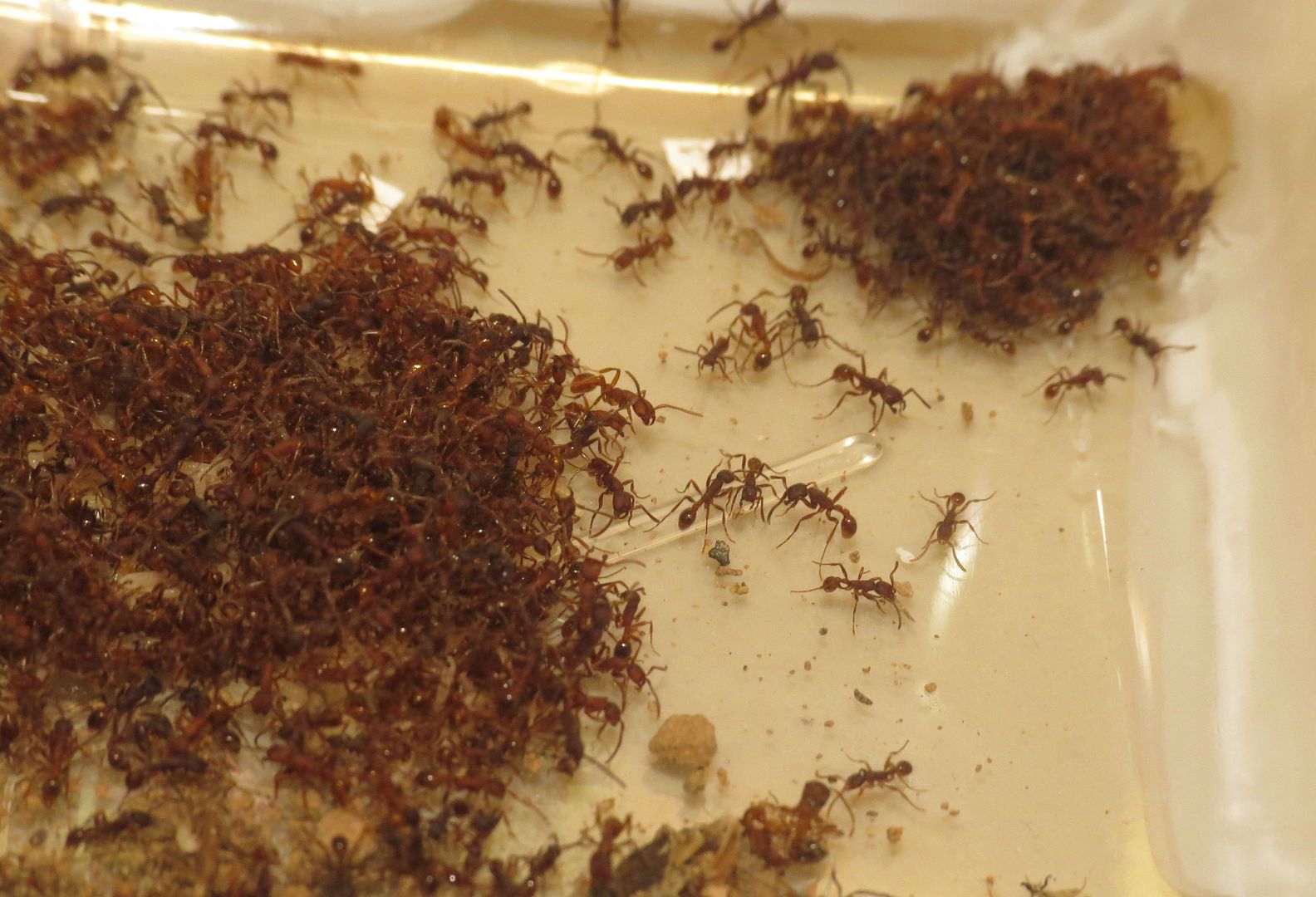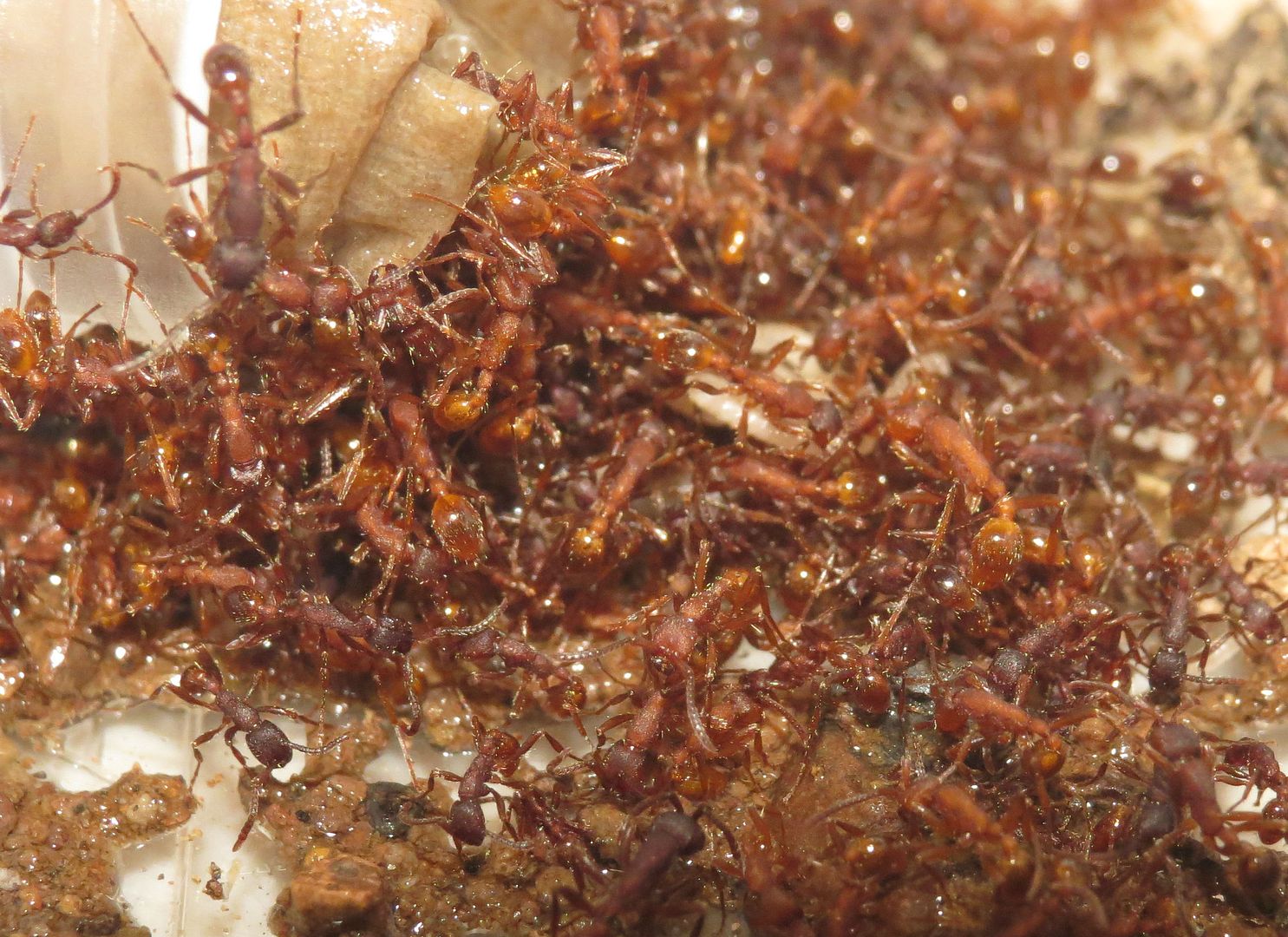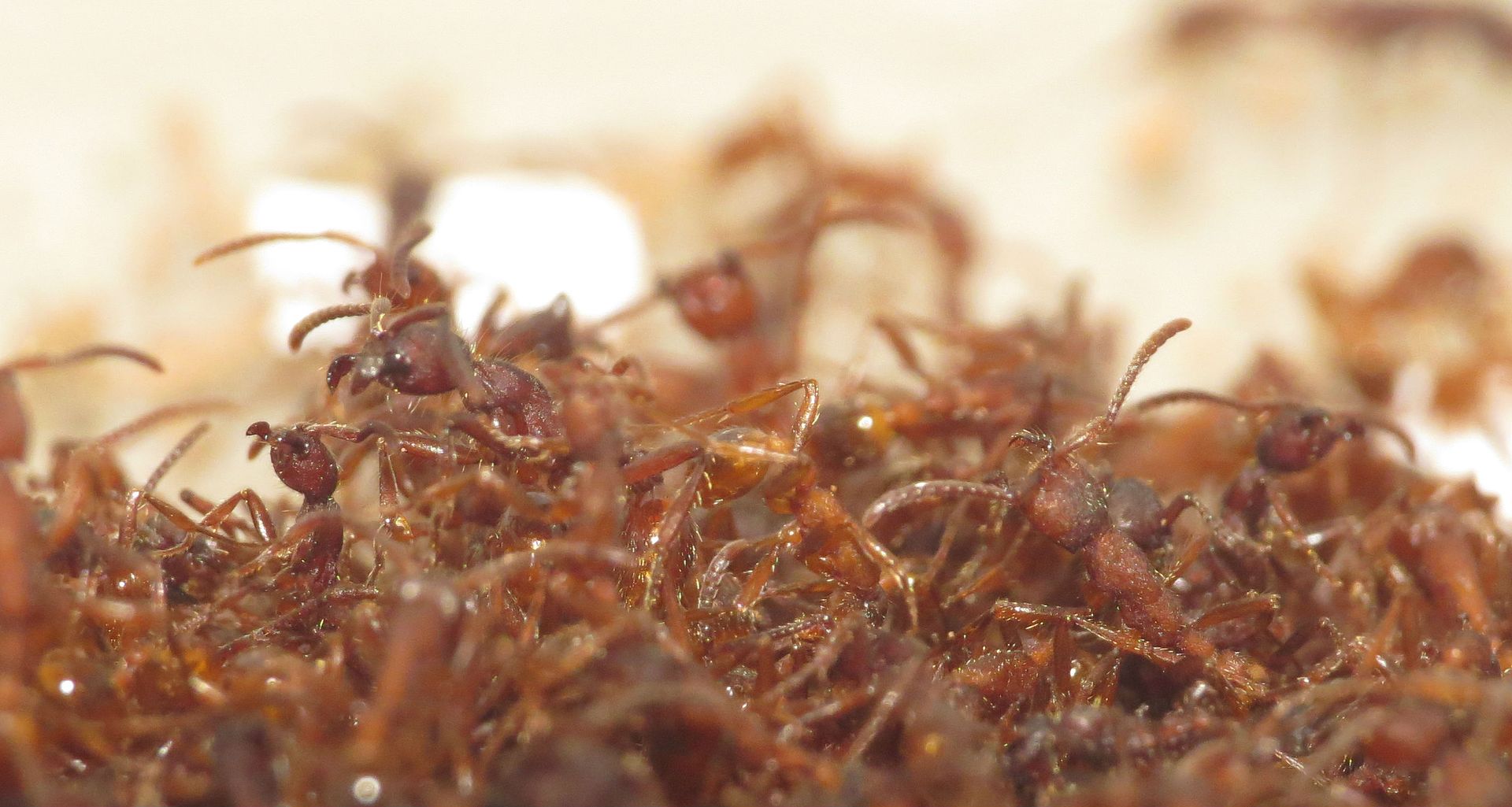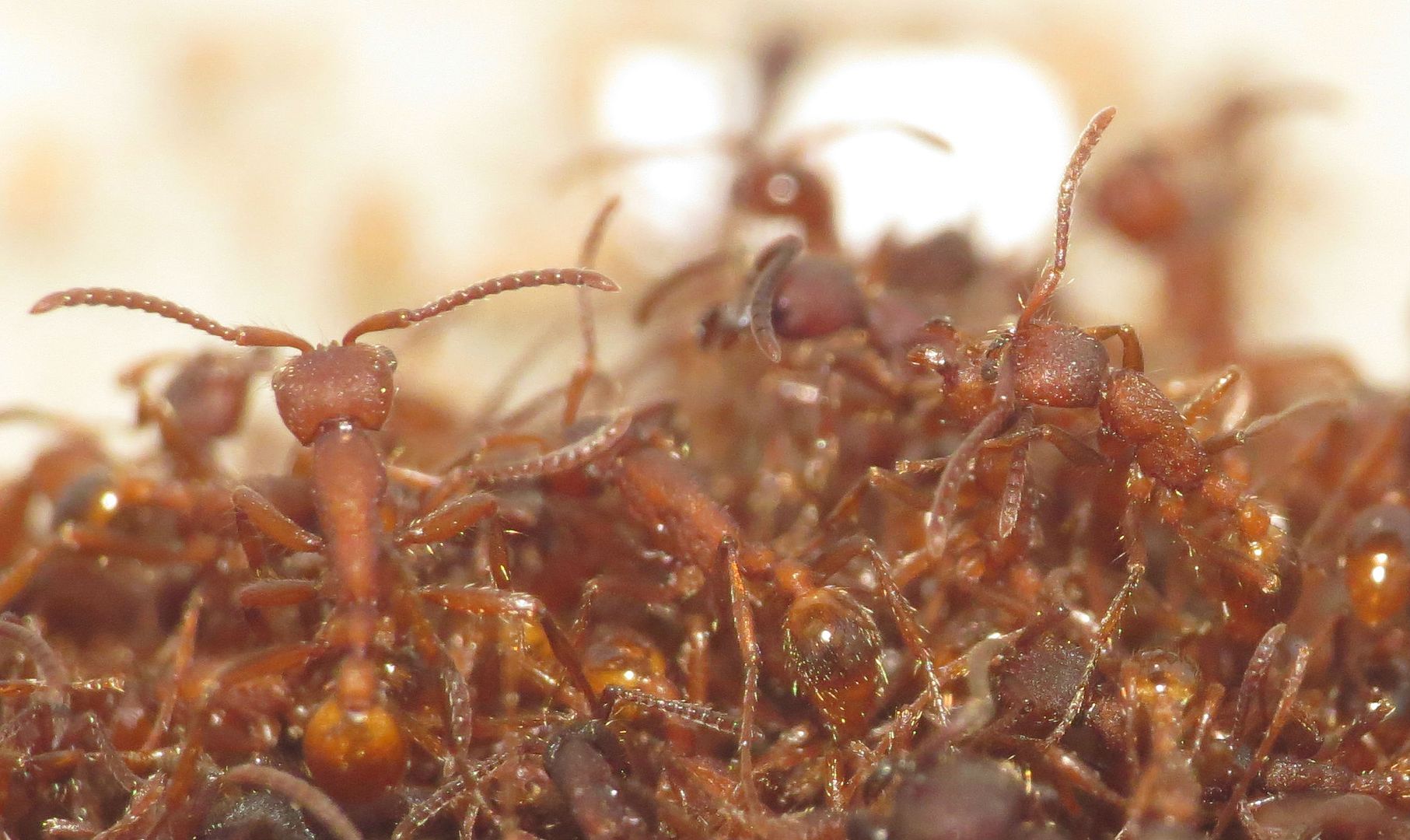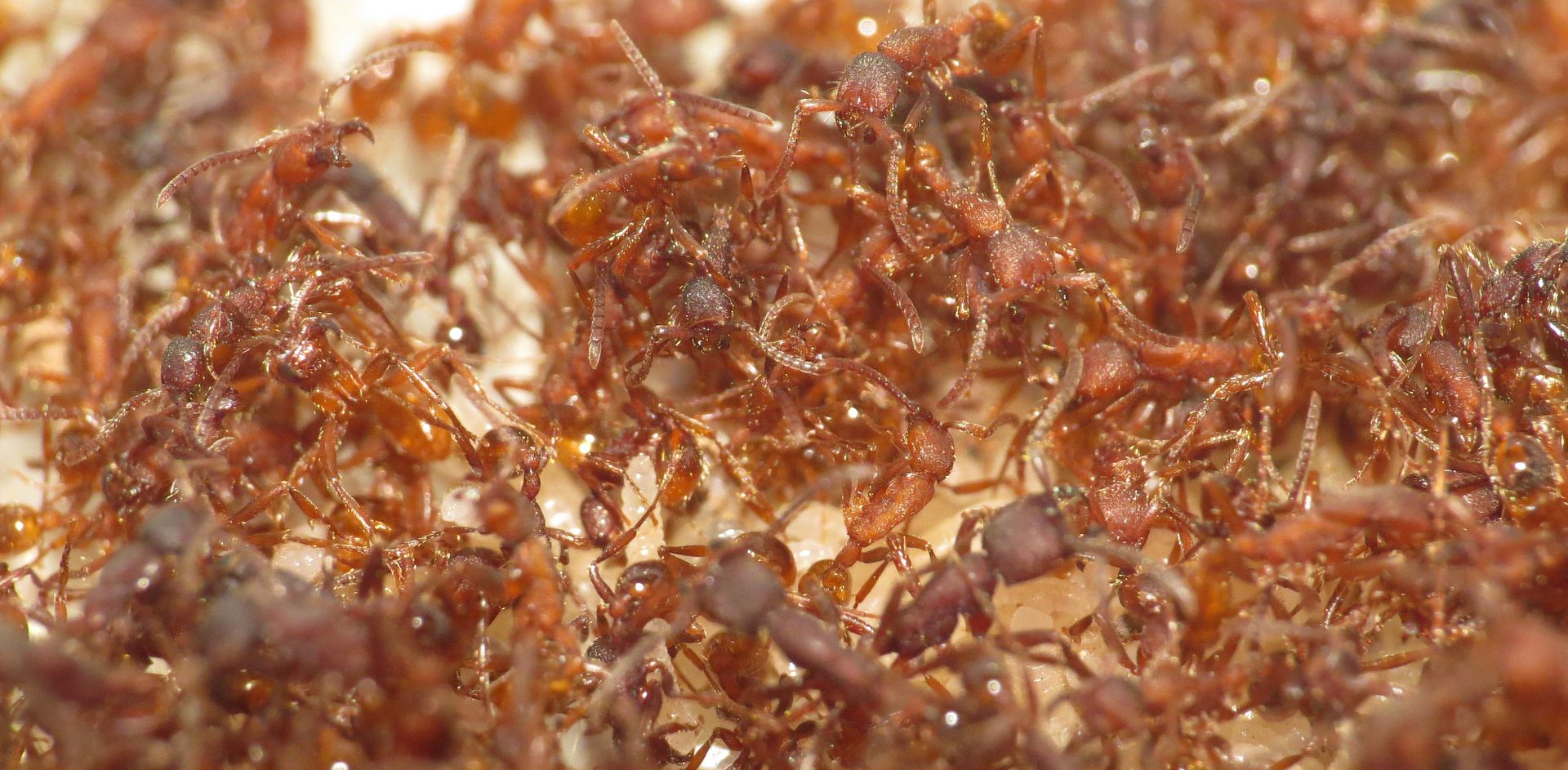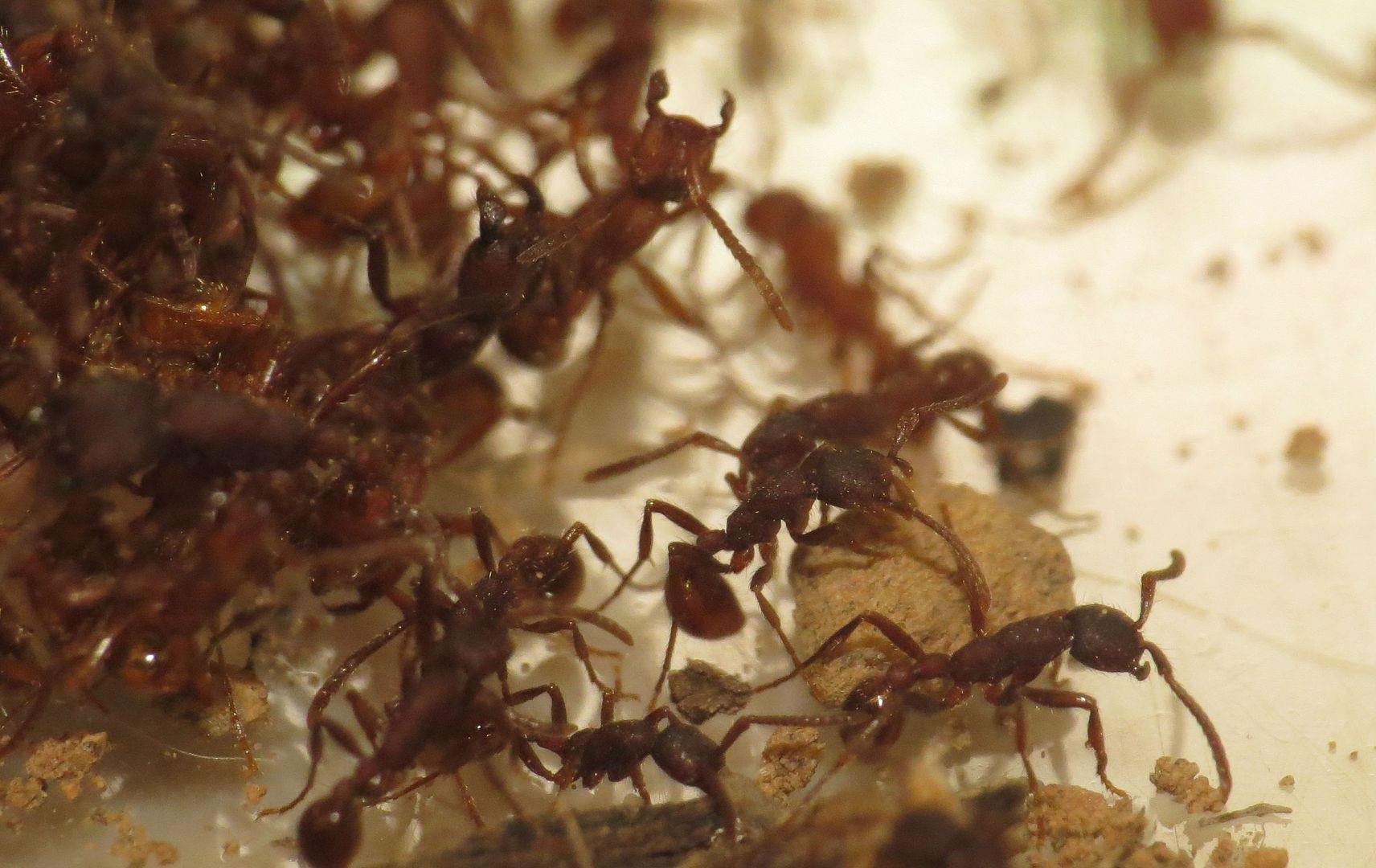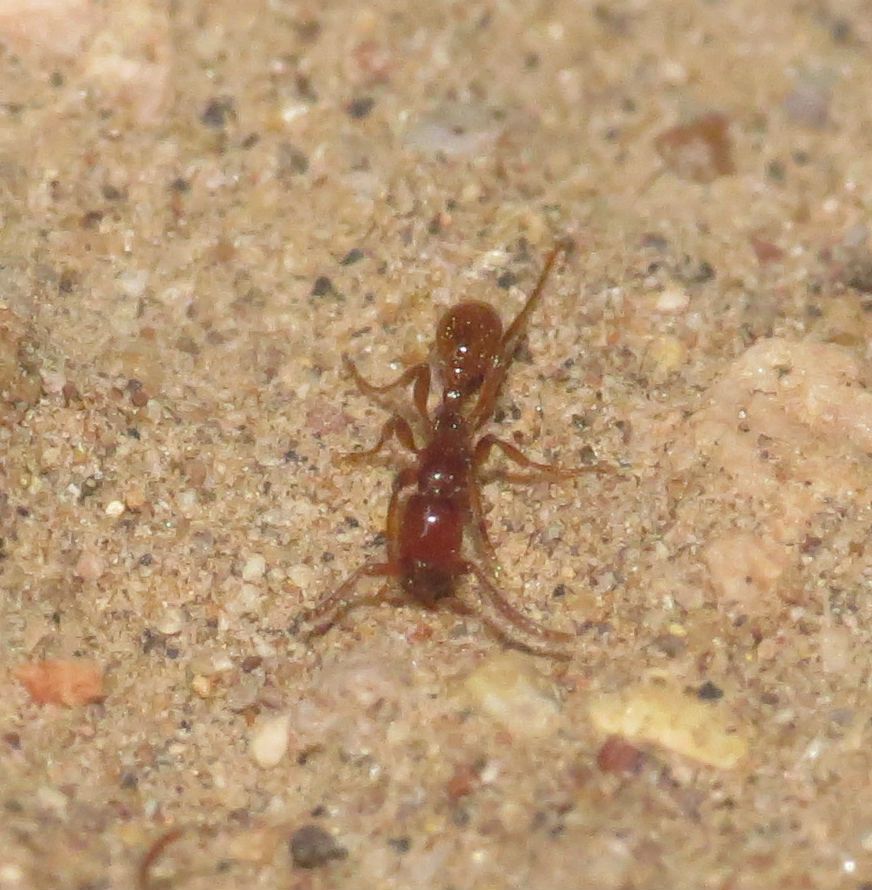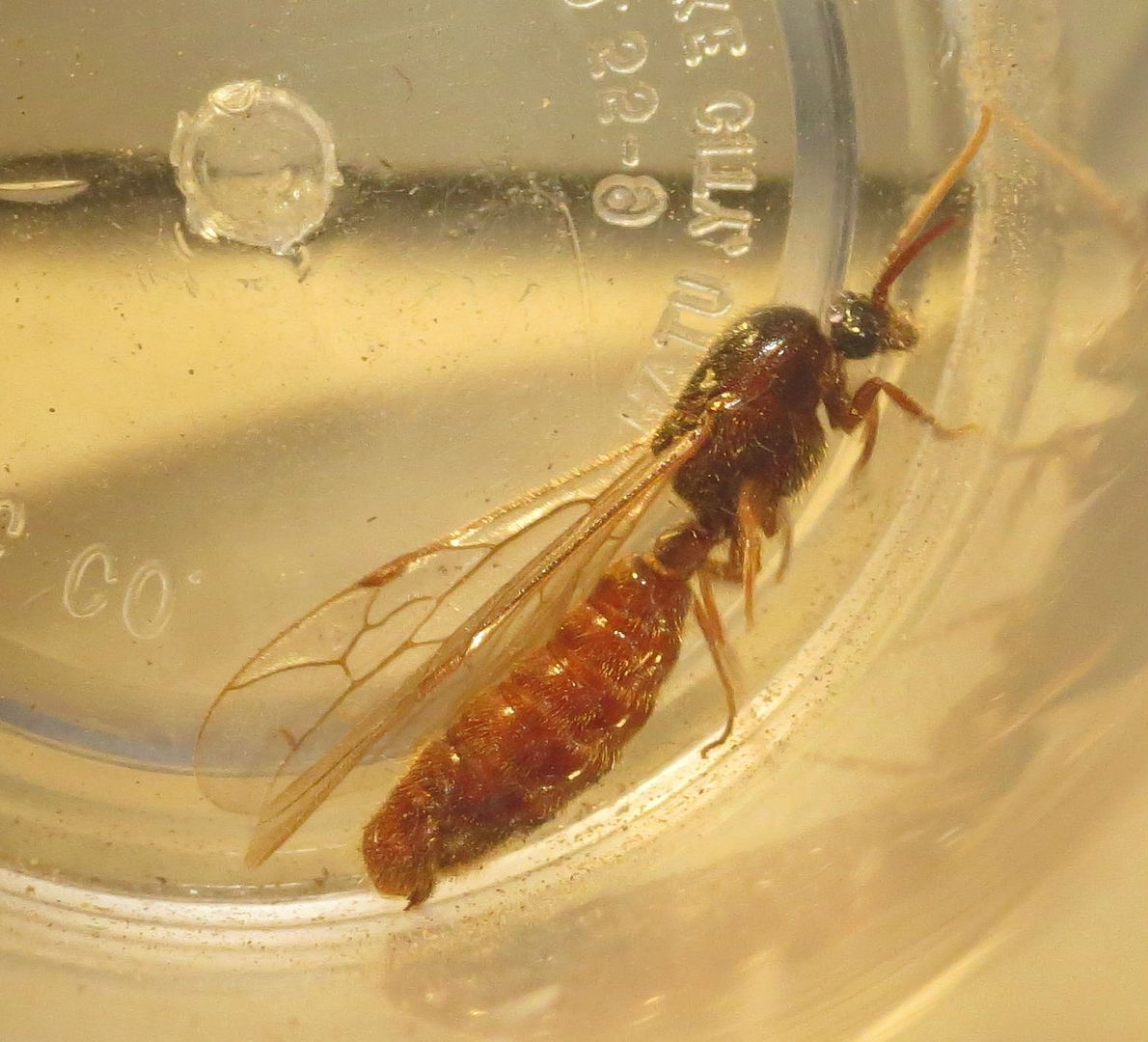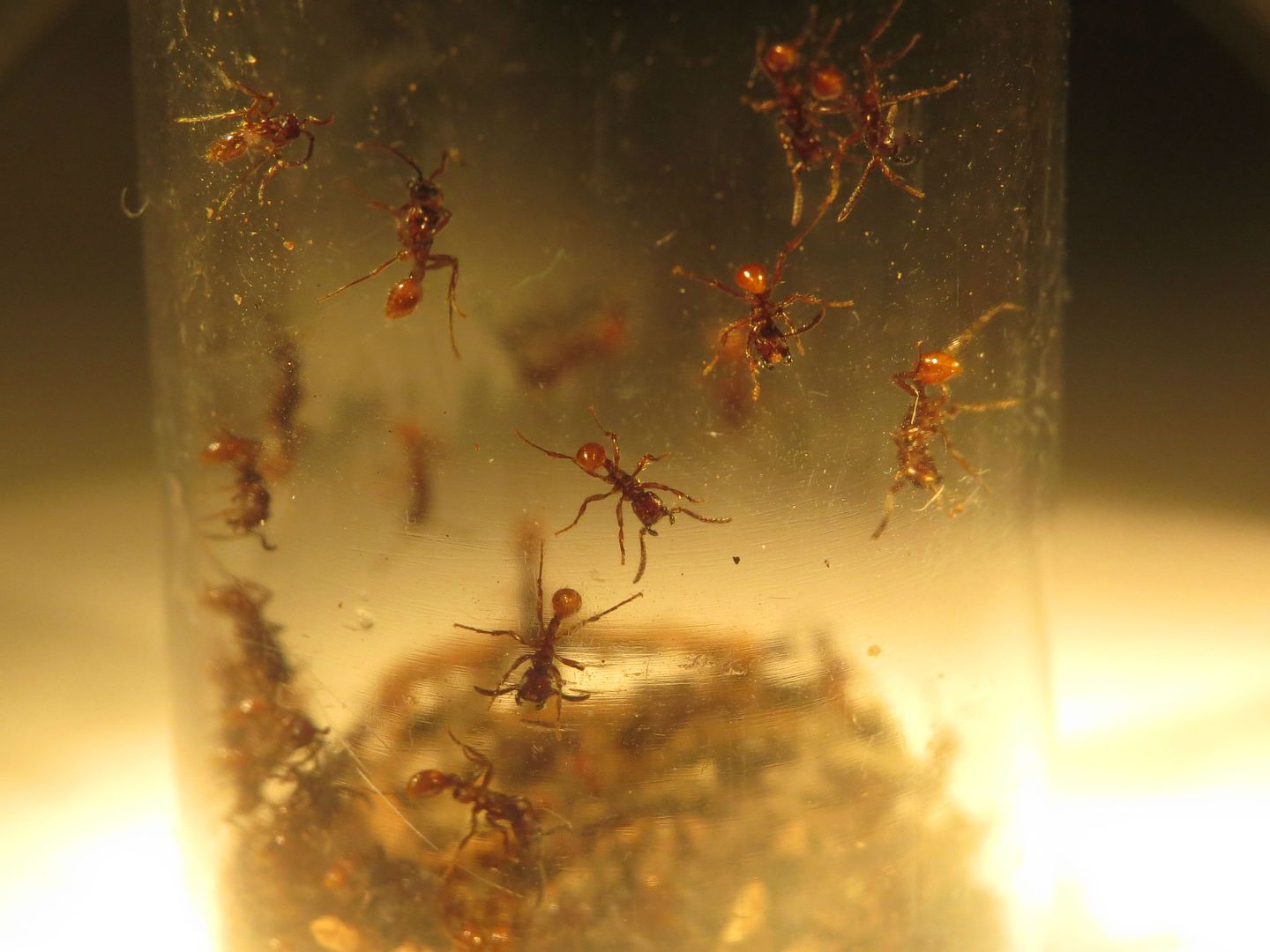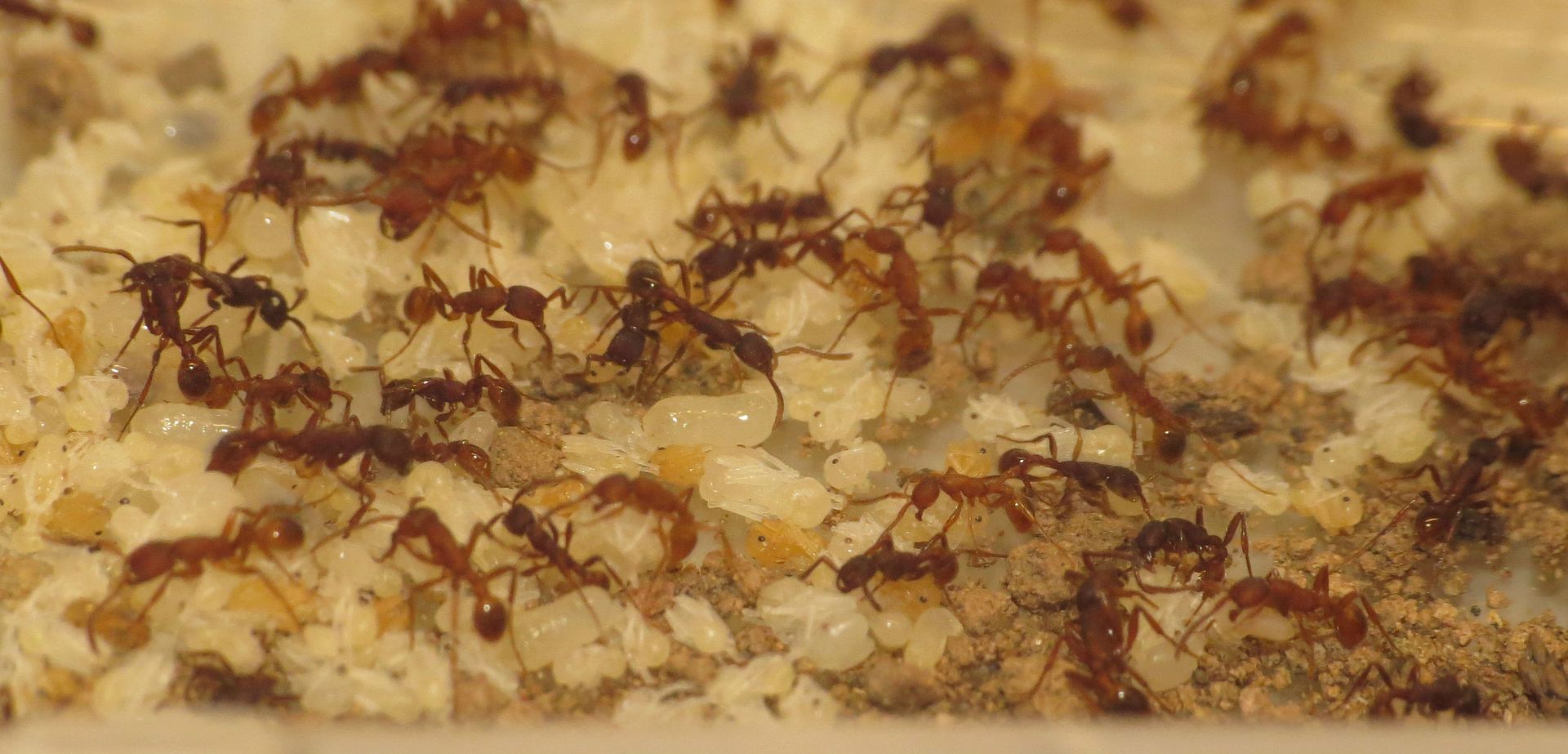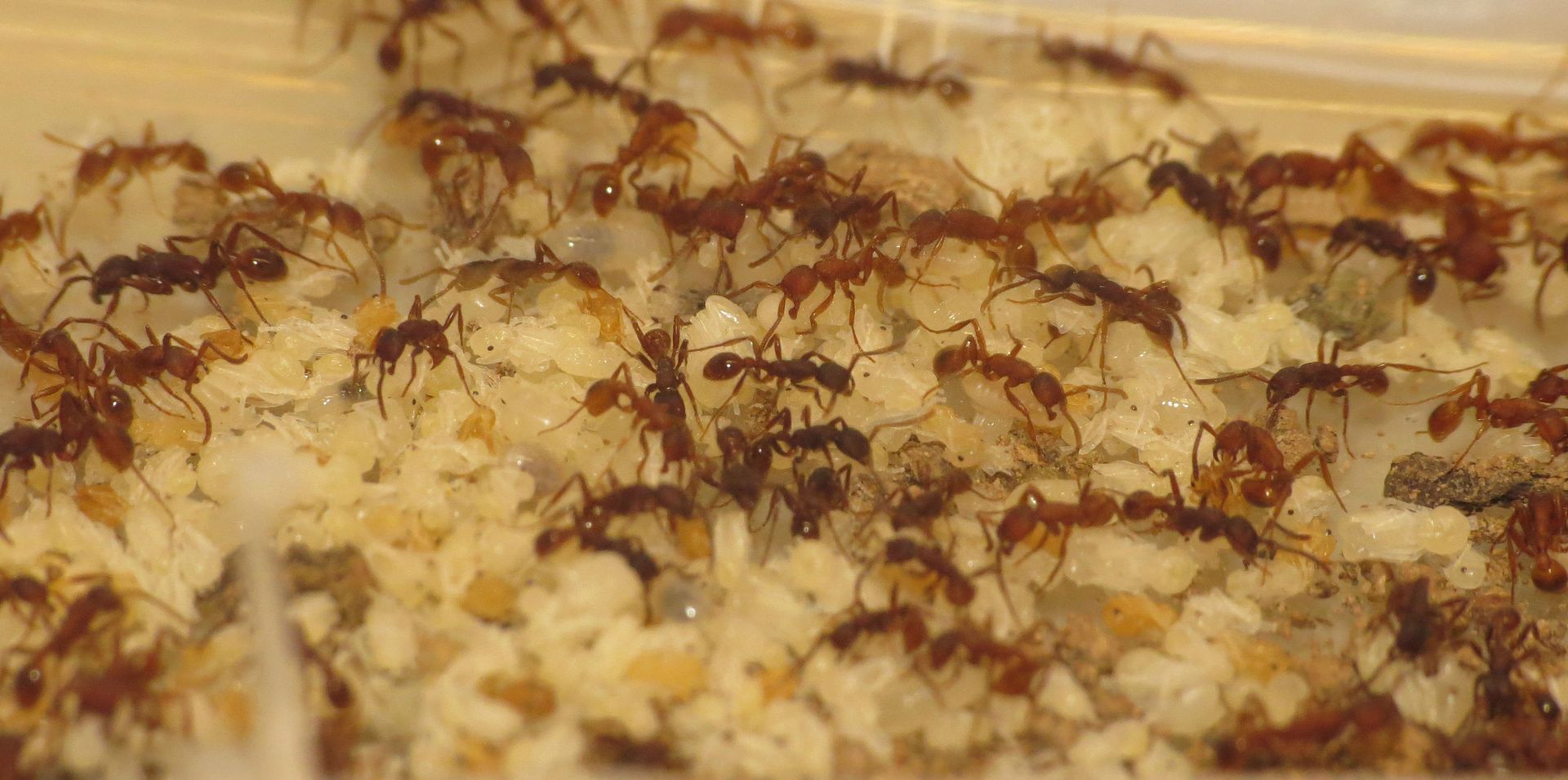Neivamyrmex is the most abundant and diverse genus of army ants in North America.
There's a lot of assumptions when the public thinks of army ants, a lot of which are wrong. Army Ants have nomadic colonies, with one parent queen, and occasionally a few daughter queens. Colonies divide, unlike most ant species which send out thousands or millions of new queens to start up colonies on their won. They are specialized predators of other ant colonies which makes their hunting habits mostly subterranean or roaming through leaf litter where they're hardly seen.
Most Documentaries like to show the genera Eciton from South America, or Dorylus from Madagascar. And odd ball species of their respected genera at that. Cameramen like to focus on the specific species that raid for other insects more so than ant colonies, which is not the norm compared to other species in their genera. This surface raiding makes for good TV, but leads one to believe it to be the norm.
The nomadic lifestyle means they make nests virtually anywhere they can fit. Here a colony took up at least 25 rocks lining a hillside, and they had excavated tunnels deep into the adjacent soil media. Their own brood was spread out all over and there was a single raiding line leaving to raid ant nests as food.
We collected several hundred of the workers and brood for a laboratory setup. A simple plastic container lined with Fluon, a substance which ants can't climb up.
They quickly brought all the brood into the bivouacs, nests formed of the ants themselves. There was on central one that had about 80% of the ants and brood, with smaller ones in each corner of the setup. What was neat was in the morning and afternoon they formed raiding lines to connect each bivouac together and these smaller ones were dissolved as needed. Feeding them the brood from other ant colonies put more ants to work and the corner gatherings vanished completely while they gathered up the brood.
The brood was mostly kept in the dark, protected by the ants themselves. The main bivouac was around a small tube of water.
It was neat staring into the mass of ants. Blowing on them would result in a flurry of activity.
While they ran about the container, the brood became visible.
Army Ants are mostly blind. This species in particular, Neivamyrmex nigrescens, has only one eye facet. Meaning they can pretty much tell when it's light and dark out but little else. Their antennae are constantly probing the air for odors that don't belong.
Surprisingly we found Army Ants out in the desert too. It's likely the nest was that of an existing ant colony they had raided.
This species was much much smaller than the ones we had found by the station and up in the mountains some.
A lot of Army Ant identification hinges on whether one particular grove between the mesonotum and pronotum (on the thorax, in front of the front legs) wraps around the sides and top of the ant completely, or whether it dissolves or smooths out somewhat along the way. It's not a great feature, I know because Gordon Snelling came up with the key, and was standing next to me when he said he wasn't happy with that one particular question in his key. But this is one of those features that separates a few species from several others. Perhaps it's more pronounced in certain worker castes?
A lot of species of Army Ants are known to exists by their males. Male Army Ants fly off from the colonies at certain times of the year with the intention of being captured by anther Army Ant colony of their own species. Assuming the colony has virgin queens that need mating with, they collect him into the nest where he inseminates one of them. The problem is, these male ants were known only by showing up at lights at night and many of them look identical.
Male ants in general are difficult to identify. Because they're a breeding caste that colonies produce only at a certain time of year for that purpose. Evolution hasn't been kind to them either, especially compared to the worker and queen castes.
Army Ant males are identified mostly by dissecting the abdomen and observing the shape of their genitals. So scientists knew several species from the males they were collecting at lights but hadn't been able to match them up to what workers they belong to. This is something Gordon Snelling and his father helped clear up.
We dumped a few of them onto a colony of Myrmecocystus (honeypot ants) hoping to see a specific reaction. In response to Army Ants raiding a colony, many ant species out right abandon their nests queen and all in the hopes to regroup elsewhere. It didn't work, perhaps because Myrmecocystus have a lot to lose from abandoning their repletes (honeypots).
Army Ants are unusual in that the adults can consume solid food. Most ants can't do this.
We fed the lab colony the brood to a while colony when we saw, sadly, they had started cannibalizing their own brood.
